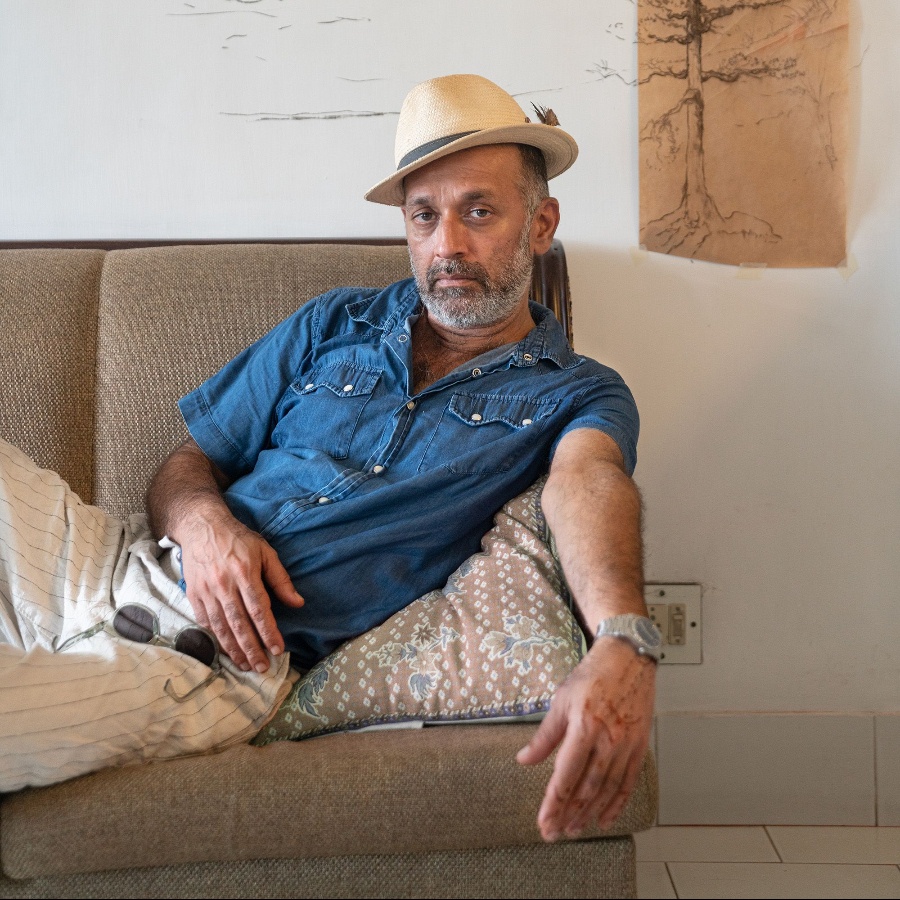In the vast pantheon of cinema that sits at the intersection of nature and science and technology, one figure emerges most prominent: the white man, sometimes as saviour, more often as destroyer. Think Jeff Goldblum’s Chaos Theory-rooted mathematician warning against genetic engineering in Jurassic Park. Matt Damon’s botanist conquering Mars through sheer ingenuity in The Martian. Even Oscar Isaac’s Victor playing God with the creature he built (a yearning Jacob Elordi) in Frankenstein. Science fiction interrogates ambition and control, but this exploration of man’s hubris for far too long has been from the POV of the creator, the coloniser, the one who builds the technology.
What these narratives rarely examine is the other side of the equation: the invisible labour that makes this technological future possible. Enter Humans in the Loop, a quietly radical film by director Aranya Sahay that centres its story on female data labellers in Jharkhand who map human life for AI to mimic. These are the ghost workers of the AI revolution and often their stories—rooted in communities with ancient knowledge systems that predate Silicon Valley by millennia—don’t get told.
Sahay’s film—the story of Adivasi women in rural Jharkhand who spend their days teaching artificial intelligence to recognise the living world—recently received the Film Independent Sloan Distribution Grant, which has previously backed movies like Hidden Figures and Oppenheimer, and will be competing at the 2026 Oscars. Shot over just 12 days across two schedules in late 2023 and early 2024, this micro-budget feature has travelled an improbable path from a remote village near the popular Jonha waterfall to Netflix and now to the Oscar campaign trail, buoyed by the grant.
And yet, this film wasn’t meant to be this film to begin with. Sahay, a 2018 graduate of the Film and Television Institute of India, Pune, encountered journalist Karishma Mehrotra’s article “Human Touch” in the journal Fifty Two through the Museum of Imagined Futures fellowship. The fellowship was to produce a short film exploring technology and society. As Mehrotra explained her article and India’s tech policies, Sahay recognised something more profound in the premise: “At its very outset, it’s showing an interaction of an ancient civilisation that is in continuum for 10,000 years and the technology of tomorrow,” he explains. Unwilling to “waste this on a short”, he invested his own money to expand it into a feature.
“But, they say that a great premise can also become a curse, because that’s where a film can plateau,” Sahay adds, speaking over a call in Mumbai, where he has landed from LA, before he travels to Goa for the NFDC Film Bazaar over the weekend and then returns to the US to get on the campaign trail. “So, that was the challenge, to explore and arrive at a narrative.”
Sahay’s breakthrough came when he realised that data labelling was not very different from parenting. “When our children are growing up, we’re doing the same job as they are doing there, repeatedly tagging images to explain to an algorithm the difference between, say, a chair and a table,” explains Sahay. This insight transformed the film into something far more intimate than a techno-thriller: the story of a headstrong Adivasi mother in a dukku raising an AI child along with her human ones.
From the sound of it, the production was a masterclass in guerrilla filmmaking. “They say that for your first film don’t work with children, don’t work with animals, don’t climb a hill,” Sahay laughs. “We ended up doing all three.” The shoot included sequences with a live porcupine and a baby, compressed into six days initially, then another six after Sahay secured additional funding to rework child performances and other elements shot in haste. When an actor scheduled to play a government official did not turn up, Sahay had to do the job himself. “Sometimes you just put yourself in the fire and figure your way out.”
In 74 minutes, what emerges is a film that operates on multiple registers. Humans in the Loop is at once a mother-daughter drama, a meditation on labour and exploitation in the digital economy, an exploration of cultural collision, and a spiritual journey toward reconciling with one’s inner child. The protagonist, Nehma (Sonal Madhushankar), operates, quite literally, between a rock and a hard place—between learning to listen to the heartbeat of the rivers, forests and stones she grew up with and being ordered to identify an insect as a pest when she knows in her bones that it isn’t; between her desire for self-determination and being compelled to learn motherly compromise.
Inspired heavily by the Malayalam filmmaker G Aravindan (Kummatty, 1979) and Canadian filmmaker Denis Villeneuve (Arrival, 2016), Sahay offers a hypnotic rhythm in his film, in the Elysian frames of the forest, and the flow of languages (plural) and silence. This is perhaps a key reason why the film has travelled as far as it has. Without stars or major production houses to back it, Humans in the Loop built its audience through 100 community screenings across India and word-of-mouth evangelising after its premiere at the MAMI film festival 2024. Then, producer Kiran Rao saw the film at Whistling Woods in February 2025 and began championing it—officially coming aboard in August. Her invitation to Netflix executives at a pre-theatrical screening led directly to the streaming deal that has given the film its widest platform yet.
At international festivals in Europe and the US, Sahay found “transnational audiences who wouldn’t focus on cultural specificity” and instead responded with striking emotional immediacy. Asked to describe the film in one word, viewers offered “whole”, “care”, “fuller”, “humanity”. As Oscar campaign season accelerates—a gruelling marathon of for-your-consideration screenings, press junkets, and Academy member outreach—Sahay and his team are focusing their limited resources on the Best Original Screenplay category.
“An idea like this comes across once in, like, five or six years,” Sahay says, when I ask what he thinks are the chances, realistically, of their movie making it to the nominations. He talks with the hope of someone who knows he is at a disadvantage when it comes to time and money but also knows he’s built a good thing. “Mother-daughter films have been done before but not like this.”
Humans in the Loop is not a sci-fi film, even if it is fiction told against a backdrop of technology and nature on a collision course. Sahay, who is already onto his second and third features—a film based on a nuclear incident that has been picked up at Film Bazaar, and a superhero movie based on the Hindu tradition of linking crows to our ancestors—has a few points to make about AI. “We tend to paint AI algorithms in this threatening light, that they’re certainly going to lead to doomsday,” he observes. “But the algorithm itself will not turn out to be evil—or empathetic. It is being built on our databases and biases. So why aren’t we taking responsibility for the algorithm we’re building?”







